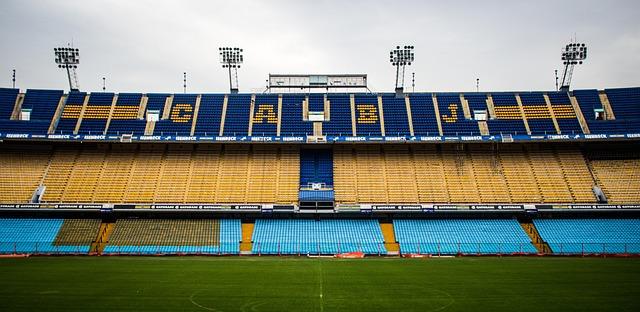Boca Juniors vs. River Plate Rivalry Explained: Copa Libertadores Final Ruined by violence
In the world of football, few rivalries boast the intensity and passion of that between Boca Juniors and River Plate, the two giants of Argentine football. Their encounters, known as the Superclásico, are electric affairs that not only captivate fans in Argentina but also draw the attention of football aficionados worldwide. Though, the 2018 Copa Libertadores final between these historic rivals was marred by violence, highlighting a darker side of this celebrated rivalry. As fans clashed outside the stadium and violence erupted, the match itself became overshadowed by the chaos, raising questions about safety, security, and the toll of fanaticism in sports. In this article, we delve into the roots of the Boca-River rivalry, its significance to Argentine culture, and the unfortunate events that marred a pivotal moment in football history.
Understanding the Deep-Seated Rivalry Between Boca Juniors and River Plate
The clash between Boca Juniors and River Plate, commonly referred to as the Superclásico, is not just a football match; it embodies a cultural and social divide that runs deep within Argentine society. This rivalry,which ignited in the early 20th century,has grown into one of the most passionate and intense in the world,fueled by factors such as class differences,geographic distinctions,and historical anecdotes. Boca Juniors, representing the working-class neighborhoods of La Boca, contrasts sharply with River Plate, rooted in the more affluent areas of Núñez. The passion of the fans transcends football, making matches between these two clubs a microcosm of Argentina’s broader socio-political landscape.
Violent incidents have unfortunately accompanied this fierce rivalry, notably exemplified during the copa Libertadores final between the two clubs, which was marred by chaos and unrest. Such events underscore the toxic atmosphere that can envelop these encounters, prompting authorities to implement strict security measures during matches. The implications of this rivalry stretch beyond the pitch, impacting local communities and international perceptions of Argentine football. As fans continue to flock to stadiums adorned in the vibrant colors of their teams, the historical context and fervent emotions involved serve as a reminder of the potency of sports to unify and divide simultaneously.
Addressing the Impact of Violence on the Legacy of the Copa Libertadores Final
The legacy of the Copa Libertadores final,particularly the infamous clash between Boca Juniors and River Plate,has been irrevocably altered by the violent outbursts that marred its narrative.While both clubs have storied histories and a passionate fan base, the aggression that emerged during this rivalry reached unprecedented levels. Key incidents included:
- Stadium violence: Fans faced confrontations outside the stadium leading to injuries and chaos.
- Police Response: Law enforcement struggled to maintain order, frequently enough exacerbating the tensions.
- match Disruption: the final had to be postponed and relocated,undermining the integrity of the event.
This violence not only overshadowed the skill and passion associated with the match but also raised profound concerns about safety and the culture surrounding football in Argentina. The impact of these events extends beyond just the immediate consequences; it influences future generations of fans and players, who may now associate this historic rivalry with fear rather than footballing excellence. There is a pressing need for both clubs to take significant measures to cultivate a healthier sporting atmosphere, including:
- Fan Education Programs: Initiatives aimed at promoting sportsmanship and respect.
- Improved Security Protocols: Enhanced measures to ensure the safety of all attendees.
- Dialog with Supporters: Open forums between club management and fan groups to discuss violence.
Concluding Remarks
the storied rivalry between Boca Juniors and River Plate transcends mere football, entwining itself within the cultural fabric of Argentina. The recent Copa Libertadores final,marred by violence and chaos,served as a stark reminder of the challenges that accompany such deep-seated passion. While the match was anticipated as a historic showdown,it ultimately highlighted the urgent need for improved security measures and dialogue among fans,clubs,and authorities. As the two giants of Argentine football continue to vie for supremacy, the hope remains that future encounters can be celebrated for their sporting excellence rather than overshadowed by violence. The world watches closely, awaiting a resolution to these issues that jeopardize the integrity of one of the most revered rivalries in the sport.

